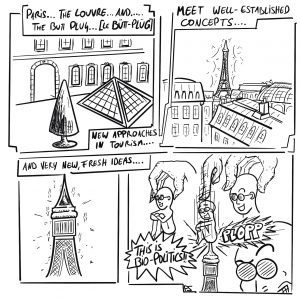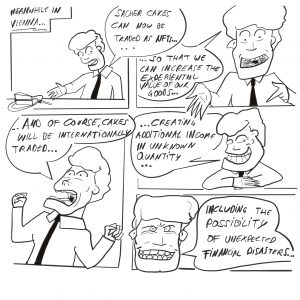Throughout their history, Comics have served as a medium for entertainment, social commentary, empowerment and urban critique. When it comes to altering and expressing urban imaginaries, Comics have always been used to chart new waters and to investigate directions for contemporary urban development. In this sense, they can be understood as a means of communication that appropriates elements of the urban symbolic arsenal and transforms them in the context of multimodal narration, while directly intervening in the social fabric of the city. Comics can express urban imaginaries, alter our understanding of the symbolic order of cities and, hence, serve as a tool for urban transformation through shared meanings.
The here-shown short Comic strips form part of a series of works that address the transformation of city centres through intensified tourism. They appropriate elements of the symbolic arsenal of European cities, here Paris, Vienna and Venice, to comment on the reconfiguration of city centres as places of relentless consumerism and entertainment. In placing Michel Foucault on the Eiffel tower, e.g., the rich symbolism of the city of light is exalted even more, entering the realm of surrealism, while commenting on salient everyday issues. Comics have the power to move people, potentially change their minds or alter personal opinions and perspectives. Here, humour is used as a weapon to point to directions for social change and reflection.
- Paris
- Venice
- Vienna 1
- Vienna 2



